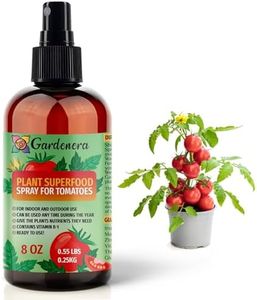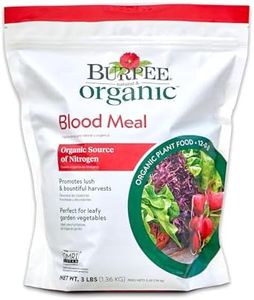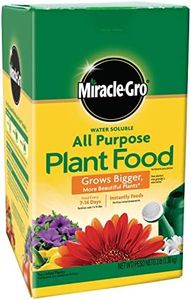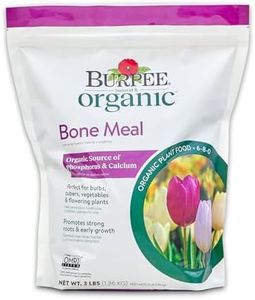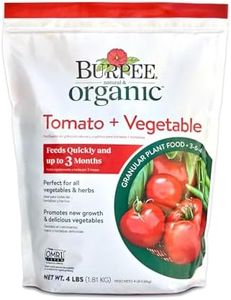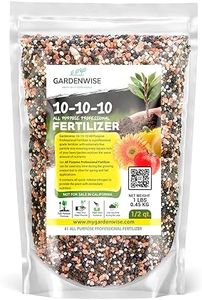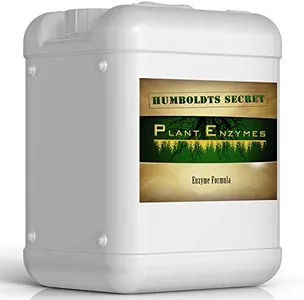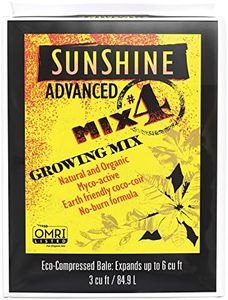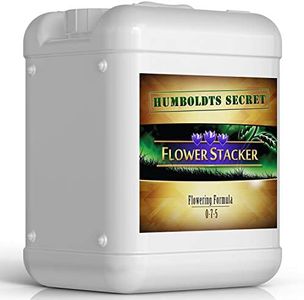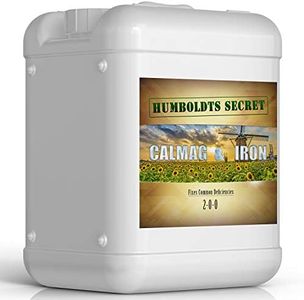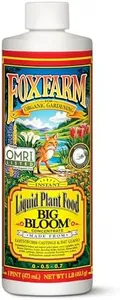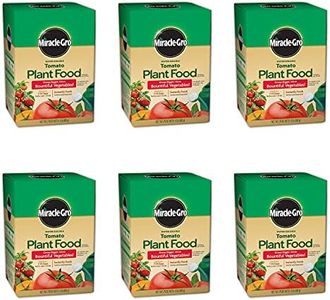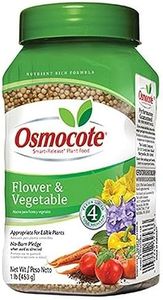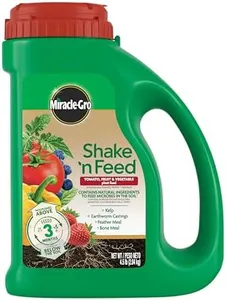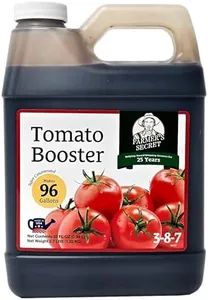10 Best Tomato Fertilizers 2025 in the United States
Burpee
30%OFF
Editor’s Choice
Burpee Organic Tomato & Vegetable Granular Plant Food, 4 lb
Our technology thoroughly searches through the online shopping world, reviewing hundreds of sites. We then process and analyze this information, updating in real-time to bring you the latest top-rated products. This way, you always get the best and most current options available.

Our Top Picks
Winner
Burpee Organic Blood Meal Fertilizer | Add to Potting Soil | Excellent Natural Source of Nitrogen | for Tomatoes, Spinach, Broccoli, Leafy Greens | 3 lb, 1-Pack
Most important from
20271 reviews
Burpee Organic Blood Meal Fertilizer is a natural, organic option designed to boost nitrogen levels in soil, which is essential for healthy tomato plant growth. Its high nitrogen content (12-0-0) makes it especially good for leafy vegetables and fruiting plants like tomatoes, helping them develop stronger stems and richer foliage. Since it’s organic and OMRI listed, it fits well for gardeners looking to avoid synthetic chemicals. The fertilizer comes in granule form and is easy to mix into potting soil or garden beds. It also supports soil health by encouraging beneficial microorganisms and can act as a mild pest repellent against animals like deer and rabbits, which is a nice bonus.
It doesn’t provide phosphorus or potassium, which are also important nutrients for tomatoes, so you might need to use it alongside other fertilizers to cover all needs. Application frequency should be moderate, following package instructions, as too much nitrogen can lead to excessive leaf growth at the expense of fruit. If you want an organic fertilizer focused on nitrogen to help your tomatoes grow strong, this product is a solid choice, especially for home gardeners aiming for natural gardening methods.
Most important from
20271 reviews
Miracle-Gro Water Soluble All Purpose Plant Food, Fertilizer for Indoor or Outdoor Flowers, Vegetables or Trees, 3 lbs.
The Miracle-Gro Water Soluble All Purpose Plant Food is a versatile fertilizer suitable for a variety of plants including flowers, vegetables, trees, shrubs, and houseplants. It contains essential nutrients that are designed to promote larger and more beautiful plants. The fertilizer can be used every one to two weeks, making it a frequent maintenance choice for gardeners. It's easy to use with either a watering can or the Miracle-Gro Garden Feeder, which makes application straightforward and convenient.
One key benefit is that it’s safe for all plants and won’t cause burning when used as directed, offering peace of mind to users. On the downside, the product is synthetic, which might not appeal to those preferring organic fertilizers. Additionally, as a water-soluble powder, it requires proper mixing with water before application. Users should also keep in mind that frequent applications may require more time and effort compared to slow-release fertilizers.
Its broad applicability makes it a strong choice for general gardening needs, though tomato-specific users might need to consider the NPK ratio more closely.
Burpee Bone Meal Fertilizer | Add to Potting Soil | Strong Root Development | OMRI Listed for Organic Gardening | for Tomatoes, Peppers, and Bulbs, 1-Pack, 3 lb (1 Pack)
Most important from
20271 reviews
Burpee Bone Meal Fertilizer is an organic, powder-form fertilizer ideal for tomato plants, peppers, and bulbs. It primarily provides phosphorus and calcium, which are essential for strong root development and healthy fruit growth—important for tomatoes that need sturdy roots and good nutrition. Being OMRI listed means it meets organic gardening standards, making it a good choice if you prefer natural products over synthetic fertilizers. The slow-release nature of bone meal means it feeds plants gradually, supporting steady growth throughout the season.
Since it is mainly rich in phosphorus and calcium with only small amounts of nitrogen, it does not offer a balanced NPK ratio, so you might need to supplement with other fertilizers for well-rounded nutrition. Application is easy—just mix it into soil or potting mix before planting or anytime during the growing season—but it’s best used cautiously, since too much phosphorus can harm plants. This product is well-suited for gardeners looking to boost root strength and flower development organically, especially if growing tomatoes in containers or garden beds.
On the downside, it lacks additional micronutrients like magnesium or iron that tomatoes also benefit from, so it’s not a complete fertilizer by itself. To sum up, Burpee Bone Meal is a trusted, natural option that supports strong roots and healthy tomato plants but should be part of a broader fertilizing plan to meet all nutrient needs.
